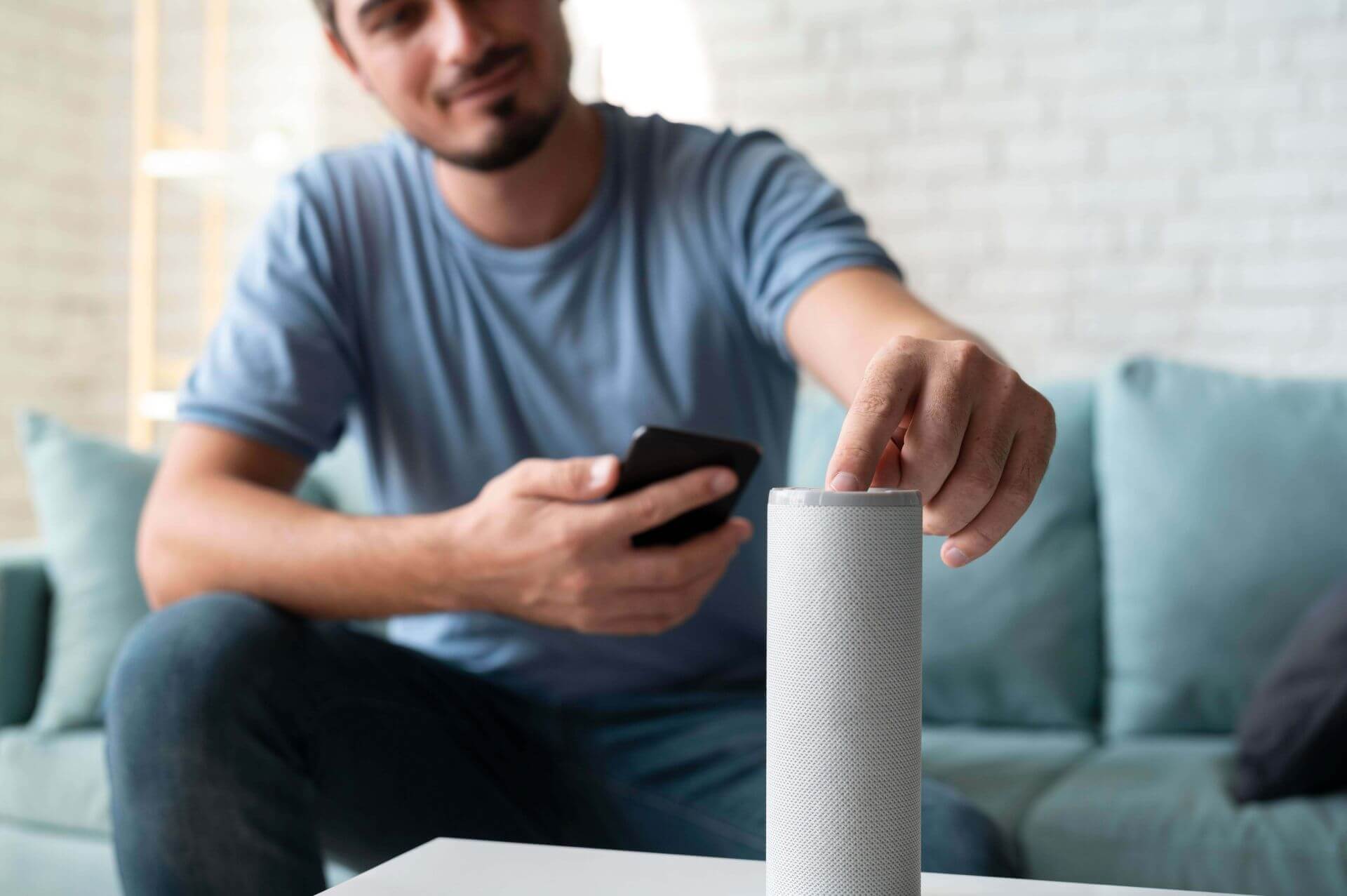Bluetooth makes life easier for many; whether listening to music with headphones, transferring data from cell phone to cell phone or using peripherals such as keyboards, printers or wireless mice. But how dangerous is the radiation that surrounds us almost daily? Are Bluetooth headphones harmful to the brain, for example, or are there limits that the industry must comply with?
What is Bluetooth?
Bluetooth is an industry standard for the transmission of data over short distances. Bluetooth is used to transfer data, videos, images and music without the need for wired connections.
In 1998, IBM, Ericsson, Toshiba, Nokia and Intel formed the Bluetooth Special Interest Group (SIG) to create a common industry standard for wireless data transmission. In July 1999, the SIG released the first final Bluetooth specification - version 1.0a. In the following years, the technology was further developed and new versions (currently: V.5.2 - as of 2022) were published.
The name Bluetooth is derived from the Danish king Harald "Blauzahn" Blåtand (910 - 987). The king was known for having created a stable connection between the countries of Scandinavia, which is why he served as a model when finding the name. The logo contains the king's initials "HB" in runic script.
What is Bluetooth radiation?
Bluetooth is microwave radiation in the frequency range from 2.400 GHz to 2.4835 GHz in the so-called ISM band, which is mainly used for industrial, scientific and medical purposes. Bluetooth uses the same frequency range as, for example, WLAN and some radio remote controls. The width of the 79 channels is 1 MHz, and the frequency within the 79 channels can change up to 1600 times per second (frequency hopping). The frequency hopping algorithm is randomly recalculated for each connection, so Bluetooth connections are generally considered secure and interference-free.
What is the range of Bluetooth radiation?
The range of Bluetooth radiation depends on the device used and its transmission power, as well as the arrangement and sensitivity of the receiving device's antennas. Obstacles such as ceilings or walls can also influence the range of Bluetooth. With regard to the transmission power, a distinction is made between three classes:
Class 1:
With a transmission power of 100 mW (milliwatts), this is the strongest class. Class 1 devices can establish connections of up to 100 m in the open air, which is why this technology is used in industry, for example.
Class 2:
The transmitting power of Class 2 is a maximum of 2.5 mW, which enables connections with ranges of up to 40 m outdoors. Indoors, the maximum range is 10 m. Class 2 components are used in notebooks, PCs and Bluetooth headphones, for example.
Class 3:
Class 3 devices have the lowest transmitting power (1 mW). The maximum range outdoors is 10 m, indoors 1-10 m. Due to the lower radiation levels, class 3 components are used in headsets, headphones and wearables.
How harmful is Bluetooth for health?
The radiation exposure from Bluetooth applications is on average lower than that from cell phones or smartphones. However, more precise statements on the harmfulness of Bluetooth radiation cannot be made because the long-term effect of Bluetooth radiation on human health has never been studied.
The radiation intensity of Class 1 devices is roughly comparable to that of cell phones. However, since class 1 components are rarely installed in devices for private individuals, consumers need not worry so much. Should private individuals nevertheless have to deal with class 1 devices, the same health-related measures must be observed as for mobile phone radiation.
Always deactivate Bluetooth when not in use!
Bluetooth applications should always be deactivated when not in use. This not only saves energy, but also protects your health.
Are Airpods, headsets and Bluetooth headphones harmful?

Airpods, headsets and Bluetooth headphones are used millions of times a day in Germany. But what about radiation exposure?
Here it is worth taking a look at the SAR value. The SAR value (Specific Absorption Rate) is a measure of the energy absorption of the human body. The German Federal Office for Radiation Protection (BfS) recommends not exceeding a value of 2 watts per kilogram (W/kg).
The good news is that the SAR values of Bluetooth headsets, for example, are significantly lower on average than those of cell phones. So it definitely makes sense to use a Bluetooth headset when talking on a cell phone.
While the SAR value of a cell phone is about 0.5 - 2.0 W/kg, the SAR value of a headset is only about 0.001 - 0.003 watts per kilogram (class 3 devices).
The German Federal Office for Radiation Protection also recommends using a headset when making cell phone calls: The BfS writes: "Use headsets. The intensity of the fields decreases rapidly with distance from the (cell phone) antenna. By using headsets, the distance between the head and the antenna is greatly increased. The head is therefore exposed to lower fields when making phone calls."
How can I protect myself from Bluetooth radiation?
Users of Bluetooth devices can find out in the operating instructions or directly from the manufacturer whether safety measures or minimum distances must be observed with regard to their products (especially for class 1 devices). In general, it makes sense to reduce the use of mobile radio applications to the minimum necessary in order to minimize possible (even as yet unrecognized) health risks.
In addition, we recommend the following measures:
- Always ensure a good connection. The better the connection, the lower the transmission power required.
- Prefer cable connections if wireless technology can be dispensed with.
- Switch off Bluetooth applications if you do not need them (e.g. wireless mouse).
- Pay attention to the power classes when buying headsets and Bluetooth headphones.
Conclusion: Bluetooth radiation - less harmful than cell phone radiation
Bluetooth applications of performance class 2 and 3 are less harmful to health than radiation from cell phones due to their lower radiation strength. Bluetooth headsets are therefore suitable for reducing exposure to cell phone radiation in the head area. In general, however, it makes sense to minimize exposure to high-frequency electromagnetic fields such as Bluetooth radiation, since the long-term effects of Bluetooth radiation on humans have never been fully researched.

Do you need help?
We will be glad to help you.
We will be happy to assist you in selecting the appropriate measuring device and also advise you on possible protection solutions.
Just contact us!
Mo-Thu 08:00 am – 5:00 pm / Fr 08:00 am – 1:00 pm
Phone: 0049 9101 / 90 93 - 0
Email: info@gigahertz-solutions.de


